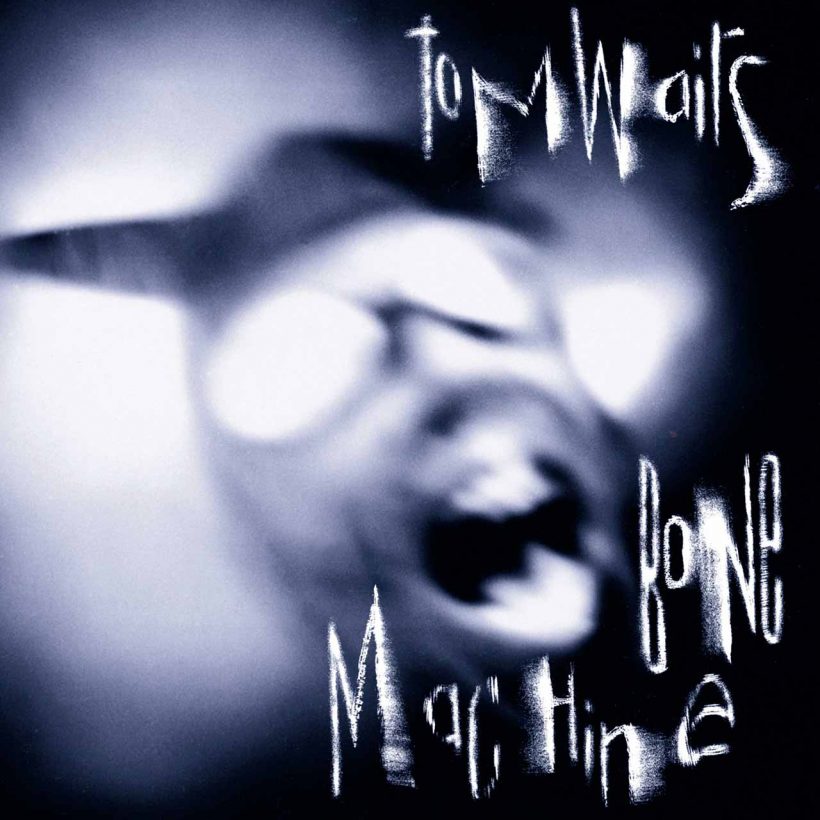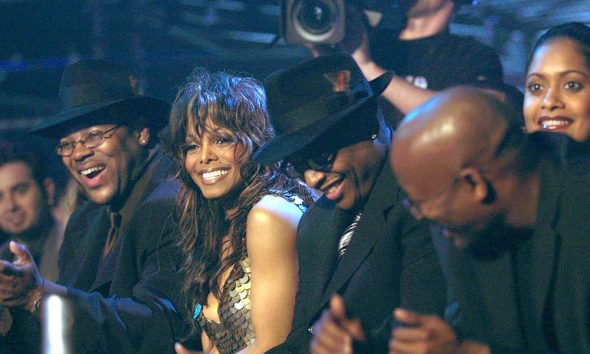‘Bone Machine’: Tom Waits’ Early 90s Masterpiece Is Still Rattling Cages
It won the 1993 Grammy for Best Alternative Album. Decades later, it still sounds like nothing else.

In the mid-’80s, Tom Waits released a trio of albums – Swordfishtrombones, Rain Dogs, and Frank’s Wild Years – that redefined who he was. The records heralded a second act, with Waits deconstructing his established persona and breaking new ground. And, in 1992, there was Bone Machine. Musically it was his most daring album yet, creating darker experimental soundworlds with rhythms that rattled like syncopated skeletons. His singing was somehow more tortured and extreme. It won the 1993 Grammy for Best Alternative Album. Three decades later, it still sounds like nothing else.
Listen to Tom Waits’ Bone Machine now.
As Rip Rense put it at the time of its release, the album was “made of clattering sticks, rusted farm equipment, choking demons, newspaper clippings, thundering stomps, Biblical myths, phantoms, marching skeletons, madmen, murders, lost friends, little kids, and a little rain.” As outlandish as that might sound, you’ll likely struggle for any other way to put it once you actually listen.
Writing the album
Waits performed much of the percussion himself, enthused by the release offered by thumping metal objects and banging sticks to achieve the clattering sound he was looking for. Using invented instruments like the “conundrum” a structure of his own devising, Waits said, “it looks like a big iron crucifix, there are a lot of different things hanging off it: crowbars, and found metal objects that I like the sound of… when you hit it, it sounds just like a jail door slammin’. I like things that weren’t intended to be instruments being used as instruments… things that have been out in a field somewhere, or that you find in the gutter. I’m always dragging things into the studio… when I come up to the studio, my car’s filled with junk.”
That studio was in Sonoma County. Waits and his wife (and writing partner) Kathleen Brennan had moved there from Los Angeles. The change left Waits feeling like “an unplugged appliance” for the first few months. When asked about the difference between city life and country life, Waits said, “First thing you notice…there’s a lot of dead animals on the road. I’m pulling deer off the road all the time. That’s the most dramatic change for me… Kathleen grew up in Illinois on a farm, she’s seen cats strung up by their necks swing over the barn doors. She’s got all kinds of things that she dredges up.”
The initial writing for the album was relatively straightforward. As Waits told Pulse magazine in 1992, “Kathleen and I went into a room for about a month and banged ’em out. We started with nothing sometimes. One-on-one. It’s a different kind of thing, writing songs with someone. But hey, we got kids together, we can make songs together.” Waits would later estimate that “about 60 ideas for songs” emerged, mostly demoed at home on a modest tape recorder. “Writing with her has been great. It pushes me into new areas.”
After whittling the list down to roughly 20 in the spring of 1992, Waits worked together with engineer Biff Dawes and bassist Larry Taylor. The trio laid down basic tracks for the 16 songs, half co-written by Brennan, that would end up on Bone Machine, making for an elemental and ragged noise that gave the album its vital energy.
The album
The opener, “The Earth Died Screaming” made for a terrifying and fantastic introduction to his new sound. Waits growls apocalyptic visions over a lurching rhythm played on what sounds like bones before adopting a fire-and-brimstone preacher’s bark for the chorus. Death seeps into every song on Bone Machine, not least the gorgeously fatalistic “Dirt In the Ground,” which finds Waits crooning in a threadbare falsetto. “Such A Scream” and “All Stripped Down” are irresistibly funky – if we’re all ending up in the dirt, why not have a good time while we’re here?
“Who Are You This Time” was Bone Machine’s “Jersey Girl” or “Downtown Train” – a bruised ballad that aims for the emotional jugular. Look closer, though, and it’s an unrelenting character examination, the fact it was written by Waits and Brennan adds an air of ambiguity to the song, is it about Waits himself? Or a shared acquaintance? Or pure fiction? “The Ocean Doesn’t Want Me” adds another dimension to Bone Machine – a spoken-word piece set to underwater-sounding percussive thumps and spooked synthesizer lines.
“Jesus Gonna Be Here” finds Waits imitating a country blues preacher over a loose blues. Another heart-stopping ballad followed, “A Little Rain,” before the sentimental mood was shattered by the clanging voodoo groove of “In The Colosseum,” a comment on the then-upcoming presidential elections. The stomping R&B of “Goin’ Out West” finds Waits’ screen experience bearing fruit as he plays a deluded wannabe actor on his way to California, where he intends to make a name for himself. “I figured, ‘Let’s do a rocker,’” Waits explained, “We’ll just slam it and scream.”
The foreboding “Murder In The Red Barn” suggests the open spaces and quiet towns of Waits’ new home were triggering his imagination. He told Mojo in 1999, “I buy the local papers every day, and they are full of car wrecks and… I’m always drawn to these terrible stories. ‘Murder In the Red Barn’ is just one of those stories, like an old Flannery O’Connor story. My favorite line is, ‘There’s always some killin’ you gotta do around the farm.’ And it’s true.”
More darkness was around the corner, “Black Wings” is a spoken-word story about a feared supernatural figure set to a spaghetti Western-infused blues. “Whistle Down the Wind” provides some respite, a tender ballad from the perspective of a regretful man waiting for death’s release. “I Don’t Wanna Grow Up” meanwhile, is a bratty reaction to the burdens of adulthood that is so direct it was later covered by the Ramones.
“Let Me Get Up On It” gives us a sense of how those original demos sounded. Waits liked the feel of the home recording – in which he yelps indecipherable lyrics over what sounds like banging pots and pans – so much that he released it. Which leads neatly into the closing track, “That Feel,” co-written by and featuring the guitar and vocals of Keith Richards. It’s a stirring and optimistic ode to the regenerative power of creativity on the soul.
Bone Machine is the sound of a great artist confronting mortality and producing original work of real depth; songs to cry or dance to, songs to shake the soul or comfort the listener. It was the start of a new act in an already remarkable career. There was plenty more to come.
Listen to the Tom Waits Halloween Playlist now and check out the Grave Diggers EP here.












